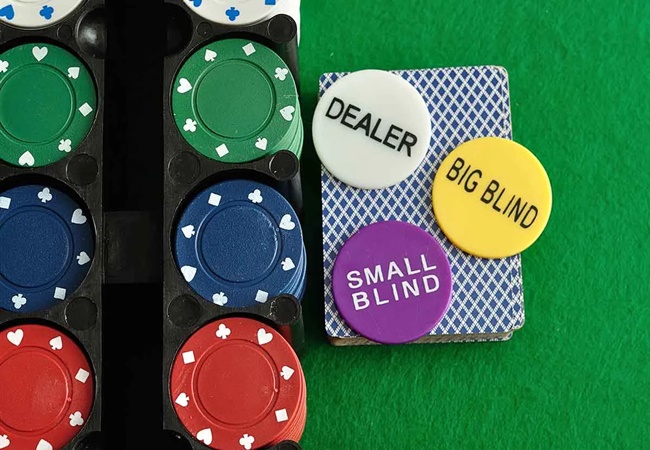
Teen Patti game, also known as Indian Poker, is a popular card game in South Asia, particularly in India. Rooted in tradition and often played during festivals and family gatherings, it bears a resemblance to the British game of three-card brag and shares similarities with poker. One of the intriguing variations of Teen Patti is the “blind ante” game, which adds a unique twist to the traditional gameplay, elevating the stakes and excitement.
Understanding Teen Patti
Teen Patti is traditionally played with a standard 52-card deck, without the jokers. The game typically involves three to six players, each dealt three cards face down. The objective is to have the best three-card hand, according to a predefined hand ranking system. The game commences with players placing an initial bet, known as the ante. The gameplay unfolds with players taking turns to either bet, call, raise, or fold, based on their confidence in their hand or their ability to bluff.
The Concept of Blind Ante
In a blind ante game, the term “blind” refers to players placing bets without looking at their cards. This element of uncertainty introduces a psychological aspect to the game, as players must rely on intuition, probability, and their ability to read other players’ behaviors rather than their actual cards. The blind ante game enhances the unpredictability and excitement, making Teen Patti even more engaging.
How the Blind Ante Game Works
- Setting the Ante: At the start of the game, each player contributes an initial ante to the pot. The ante amount is decided before the game begins and is usually small compared to the potential bets in subsequent rounds.
- Dealing the Cards: Each player is dealt three cards face down. Players have the option to play “blind” (without looking at their cards) or “seen” (after looking at their cards). Those who choose to play blind must place a bet that is at least equal to the current stake but not more than twice the stake.
- Betting Rounds: The game progresses with each player taking turns. Blind players have to bet half of what seen players must bet. For instance, if a seen player places a bet of 4 units, a blind player can bet only 2 units. This rule ensures that blind players are not at a disadvantage despite their lack of information about their cards.
- Raising the Stakes: Players can choose to raise the stakes at any point during the game. A raise must be at least double the previous bet. This escalation of stakes adds to the tension and requires players to carefully consider their moves, especially those playing blind.
- Showdown: The game continues until all but one player have folded or the bets have reached an agreed maximum. If only one player remains, they win the pot. If multiple players remain, a showdown occurs where the players reveal their cards, and the best hand wins. The hand rankings in Teen Patti are similar to poker, with a few variations, such as the highest being a “trail” (three of a kind), followed by a “pure sequence” (straight flush), “sequence” (straight), “color” (flush), “pair” (two of a kind), and “high card.”
Strategic Depth in Blind Ante Game
Playing blind in Teen Patti is not just about luck; it involves a significant amount of strategy and psychological acumen. The following strategies can enhance one’s chances of success in a blind ante game:
- Reading Opponents: Since blind players have no knowledge of their own cards, they must keenly observe their opponents’ behaviors and betting patterns. Identifying bluffers and cautious players can provide valuable insights.
- Controlled Aggression: Blind players often adopt an aggressive betting style to compensate for their lack of information. By consistently raising the stakes, they can pressure seen players into folding, even if the latter have strong hands.
- Bluffing: Bluffing is a cornerstone of Teen Patti. In a blind ante game, the inherent uncertainty of blind players can make their bluffs more credible. A well-timed bluff can compel opponents to fold, thereby securing the pot.
- Bankroll Management: Given the higher stakes and unpredictability, managing one’s bankroll is crucial. Blind players should set a limit on their bets to avoid significant losses and to ensure they can stay in the game for a longer duration.
The Psychological Aspect
The blind ante game in Teen Patti adds a psychological layer that distinguishes it from other card games. The decision to play blind or seen itself is a psychological tactic. Playing blind can project confidence and unpredictability, making it difficult for opponents to gauge one’s hand strength. Conversely, choosing to play seen might suggest a conservative approach, but it can also be a bluff in itself, meant to lure opponents into a false sense of security.
Conclusion
The blind ante game in Teen Patti is a captivating variation that amplifies the traditional gameplay’s excitement and strategic depth. By introducing elements of uncertainty and psychological warfare, it challenges players to rely not just on the strength of their hands but also on their ability to read opponents, manage risks, and employ cunning tactics. This variation keeps the essence of Teen Patti intact while offering a fresh and thrilling experience for both seasoned players and newcomers. Whether played during festive gatherings or casual get-togethers, the blind ante game ensures that Teen Patti remains a beloved and enduring card game in the hearts of many.
